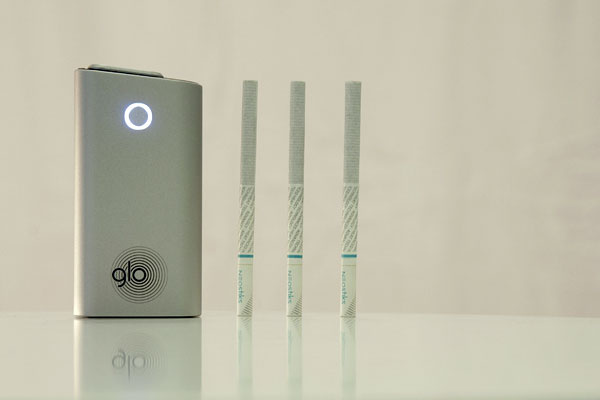A glowing report on vapor

Scientists at British American Tobacco have reported that they observed changes in just two genes when human airway tissue was exposed to vapor from the company’s glo tobacco heating product (THP), whereas thousands of gene changes were observed in tissue exposed to cigarette smoke.
They pointed out, however, that these results do not necessarily mean that the use of glo is less harmful than is the use of other tobacco products.
‘The impact on tissue exposed to glo vapor was minimal and more comparable with that of air when tested in laboratory conditions,’ according to a BAT press note.
‘These results add to evidence suggesting that glo has the potential to be substantially reduced risk compared to smoking conventional cigarettes.’
As part of the press note, Dr. James Murphy, head of reduced risk substantiation at BAT was quoted as saying that products such as glo were new, and that consumers and regulators wanted as much information about them as possible. That was why testing the impact of glo vapor compared to that of smoke was so important.
In this case, scientists were observing gene expression, which could give an indication of whether exposure to an aerosol, such as smoke or glo vapor, had had particular toxic effects.
BAT’s results clearly showed that cigarette smoke triggered a robust gene expression response, while exposure to vapor from glo had very limited impact on gene expression. Murphy said there was a striking difference.
In the recent study, scientists at BAT used human cells grown in the laboratory to test the impact of glo vapor and compare it to the impact of smoke and air.
The tissue (MucilAir™) is made up of human cells that grow in the laboratory to create a 3-dimensional structure that mimics the natural structure and characteristics of the living human airway. The resulting tissue is, for example, capable of producing mucus, as in the living airway, and it is covered in hair-like projections called cilia, which are used to expel inhaled dust from the respiratory system.
‘Using a robot that mimics how consumers use their products, this tissue was exposed to air, smoke from a reference cigarette (3R4F), or vapor from glo continuously for one hour,’ the BAT note said. ‘Then, to measure the cell response, the scientists mapped the genes that were switched on and off at 24 hours and 48 hours after the one-hour exposure.
‘This involves breaking open the cells and the cell nucleus to get at the genetic material inside it. The material is then studied to determine what genes are impacted.’
“Our technology is state-of-the-art,” said Murphy. “We have the capability to profile the activity of tens of thousands of genes simultaneously, providing more information than ever before on the genetic profile of exposed cells.”
‘Results show that cigarette smoke triggered thousands (2809) of changes in the expression of genes strongly involved in the development of lung cancer, inflammation and fibrosis,’ the note said. ‘In contrast, only two genes were affected by exposure to glo vapor.
‘These results, which are published in the journal Scientific Reports (doi: 10.1038/s41598-018-19627-0) add to evidence that glo vapor may cause less damage to cells as compared to cigarette smoke. Future studies will look at the impact on human tissues of more intense and longer exposure to this vapor.
‘Previous research conducted by British American Tobacco has shown that glo vapor contains around 90-95 percent less toxicants compared to cigarette smoke from a reference cigarette, in terms of the priority list of nine toxicants that the World Health Organization recommends reducing in cigarette smoke.’